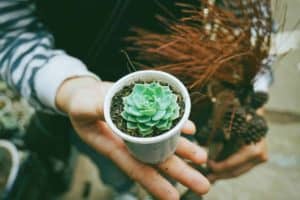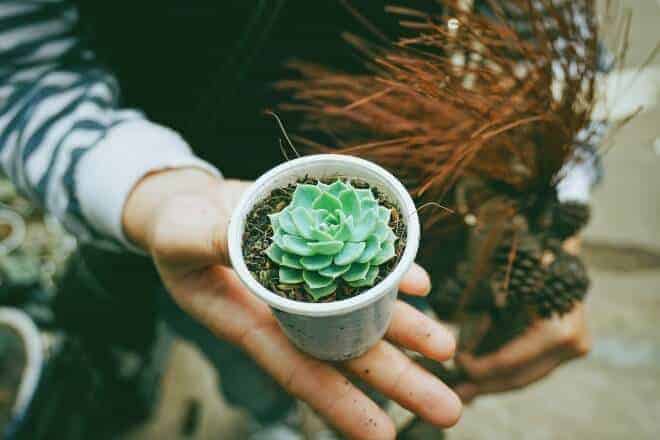
via: Unsplash / Tony Lam Hoang
Succulents are pretty much the trendiest type of plant around, but not knowing how to water succulents properly can make some people think they're difficult to care for. This couldn't be further from the truth - their needs are actually quite simple which makes them perfect for people who aren't usually great with plants.
Learning how to care for succulents won't take long as it isn't a complicated process but there are a few things you need to know in order to help these plants thrive. As they can be grown indoors and outdoors in a lot of countries, finding out how to plant succulents can often be the secret to success.
With a little know-how and some good old fashioned patience, you can have a planter or garden flower bed full of flourishing plants. If you're ready to find out how to water succulents, take a look below where you'll learn everything you need to know.
Why is knowing how to water succulents important?
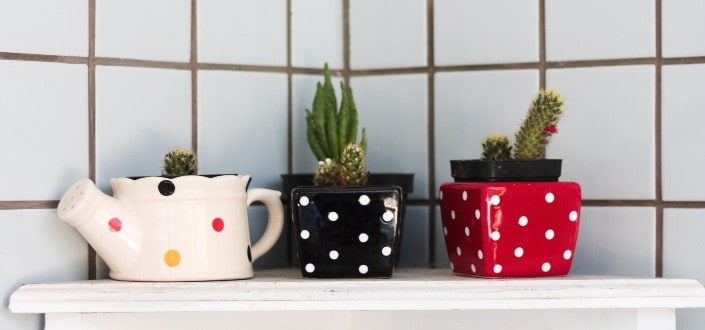
via: Unsplash / Nathalia Belfort
The hardest part of looking after a succulent is knowing how and when to water the plant. This is because, with too little water, a succulent will look shrivelled and wrinkly with hard, crisp leaves. Underwatered succulents will be very slow to grow and may even dry out and die completely.
On the other hand, over watering can be just as much of a risk to the health of a succulent. Overwatered succulents will have yellow, mushy almost translucent leaves. These leaves might be floppy and wilted because of the amount of water that they're holding. Unfortunately, it can be harder to save an overwatered succulent because too much water can lead to rot which affects the stem and sometimes the leaves of the plant. While underwatered plants will often perk up once a good watering schedule is adhered to, it can be very difficult to reverse rot.
How To Water Succulents
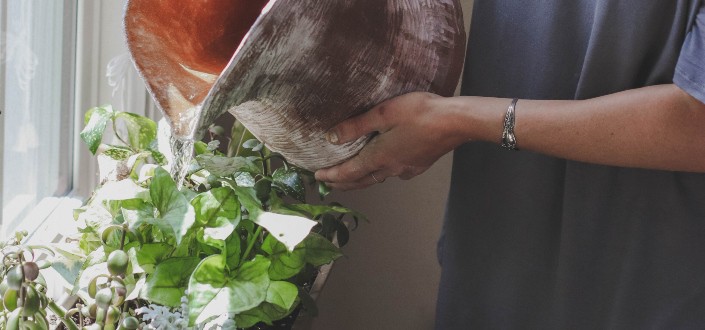
via: Unsplash / Cassidy Phillips
Ensuring that your plants are potted in the correct type of soil is the first step in making sure that they're watered correctly. The soil should be a mixture of compost, gravel or small stones and sand, which helps it to drain easily. Some soils may contain things like bark or coconut husk which help water drain away as they don't absorb moisture readily. Avoid the temptation to pot succulents in compost - this rich medium absorbs water like a sponge and will stay too moist for succulents to be happy. Below you'll find all the information you need on watering different types of succulents correctly now that you know they're in the best type of potting medium.
1. Watering Indoor Succulents
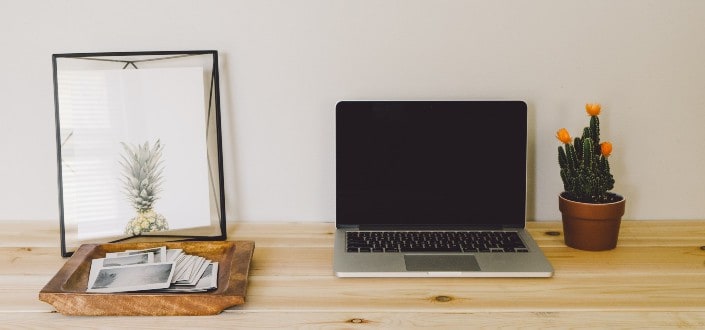
via: Unsplash / Pineapple Supply Co.
If you're not used to looking after succulents, it's often best to begin by growing them in pots indoors. This is because it is usually much easier to control the plant's conditions when it is indoors as it isn't subject to changeable weather or temperatures. Indoor succulents should be planted in pots with a drainage hole to make it easier for water to drain away and harder to overwater the plant.
You should aim to water your succulents well and give them a thorough soaking. This means that you should water them enough that water comes out of the drainage hole at the bottom of the pot. But remember not to let the pot sit in water in a dish or saucer as this can lead to too much moisture in the pot.
How Often Should I Water Indoor Succulents?
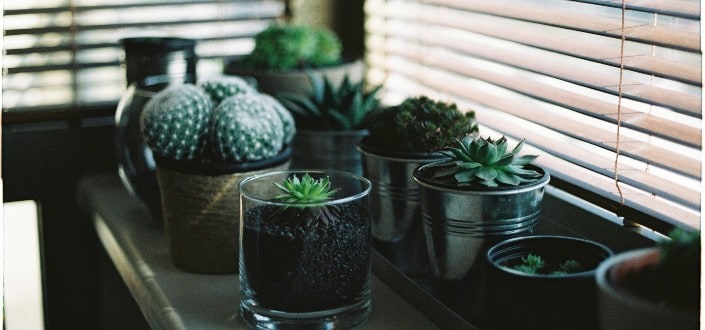
via: Unsplash / Milada Vigerova
How often to water a succulent depends on the type of plant you have, but a good rule of thumb is to water once a week. This leaves enough time for most pots to fully dry out in between waterings. It can be a good idea to stick a finger into the soil to make sure that it is dry, as long as it won't disturb the plant. If you are unsure whether it's time to water the plant again, it's best to be cautious and wait a few days - most succulents won't mind this.
If you often struggle to remember when you last watered a pot plant, you can try lifting it up after you give it a good watering to see how heavy it feels. Then, when you think it might need watering again, lift it again to see whether it feels just as heavy or much lighter. The lighter it is, the more likely it is to need watering. Some people even weigh their succulent pots using scales to help them work out whether it's too soon to water again.
2. Watering Outdoor Succulents
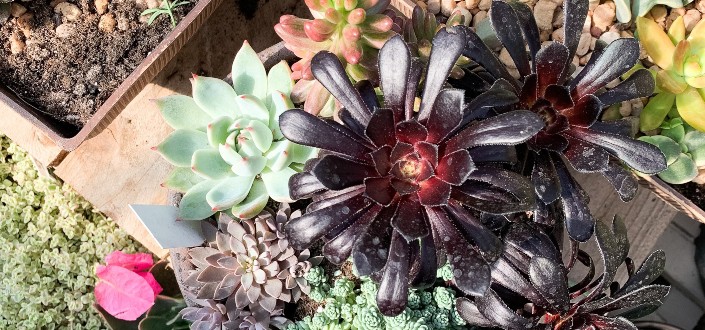
via: Unsplash / Alissa Bankowski
If you are lucky enough to live in an area where outdoor succulents thrive but you have never looked after these plants before, you will probably find it hard to work out how to water succulents in your yard. How much water they need will depend on the type of succulent and the amount of rainfall that you have experienced. Because this type of plant doesn't like to be kept constantly moist, wet weather will mean that you won't need to water your succulents much at all. However, succulents kept in pots should be checked at least once a week as these will dry out faster than those kept in the ground.
When watering outdoor succulents kept in pots or grown in the ground, be sure to give them a good soaking each time you water them. Point your watering can or hose at the soil at the base of the plant and spray for 5 - 10 seconds to ensure that they get an ample amount of water that the roots can begin sucking up. Just like with succulents kept in pots, it's important to ensure that succulents grown in the ground are planted in gritty, well-draining soil to prevent the roots or stems from becoming too damp.
How Often Should I Water Outdoor Succulents?
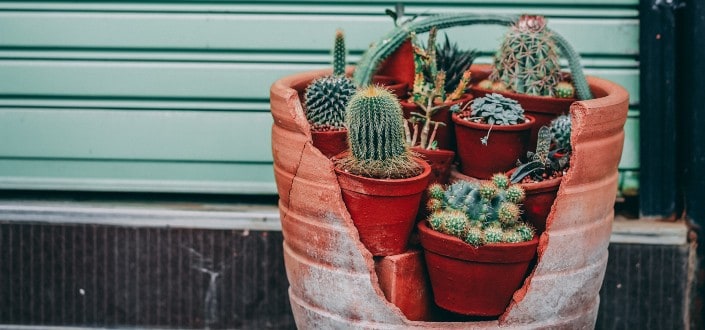
via: Unsplash / OC Gonzalez
Because weather conditions and temperature can vary so much outside, there is no one-size-fits-all approach. Working out how to put water succulents kept outdoors is part of the fun of growing them. A good strategy is to wait until the leaves of the plants show very early signs of underwatering - they look very slightly wrinkled and lined. Once they look this way, give the plant a good soaking and then wait again. You might find that during the summer your succulent will need watering weekly, while during winter it might not need watering for weeks on end.
Saving Succulents That Have Been Over- or Under watered
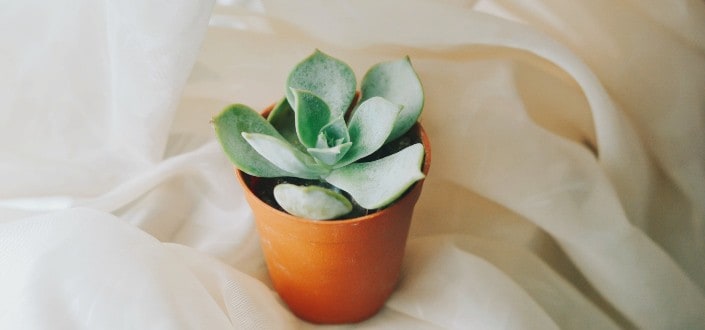
via: Unsplash / Audrey Jackson
If you notice that your plant isn't thriving, it makes sense to act quickly depending on whether the succulent has been overwatered or underwatered:
Over watered plants should be left to dry out for as long as possible before watering again. If the soil is very waterlogged, the plant may need to be removed and repotted in dry soil. If you notice mushy, black or rotten areas of the plant these should be cut away, leaving just the tip if necessary. Let the tip of the plant dry out for a few days then pot it in dry soil.
Under watered plants are often easier to save - usually, all you need to do is provide more water, either by thoroughly soaking the soil each time you water or by watering slightly more frequently.
More Awesome Guides To Plants
Now that you know how to water them properly, you might be keen to find out how to look after other types of plants. The links below will provide you with lots of information and inspiration to keep your green fingers happy:
- If you'd love your home to look like a jungle, you'll want to check out these awesome tropical house plants.
- Want to brighten up your space with some cool plants but aren't sure what to choose? Find out about different types of house plants to see what would be best.
- If you're keen to make home-grown avocado toast, you won't want to miss out on learning how to grow an avocado tree.
In Conclusion
Aside from learning how to plant succulents, finding out how to water succulents is the best thing you can do to give your plants the best chance of survival. Now that you know how to care for succulents in your home and garden, it won't be long before your plants are growing and flourishing.


